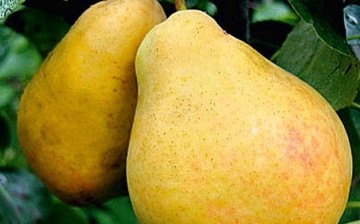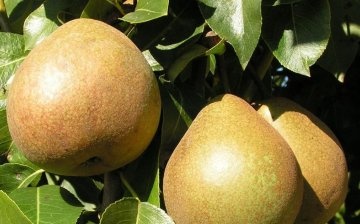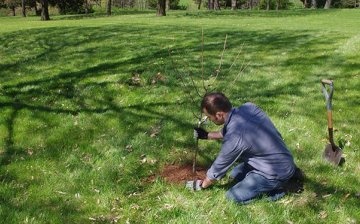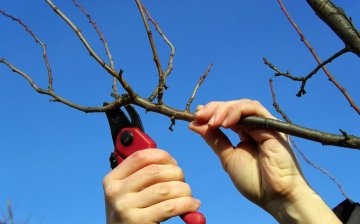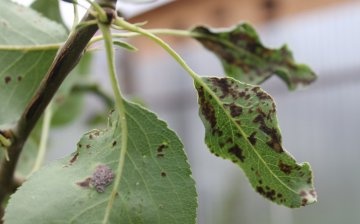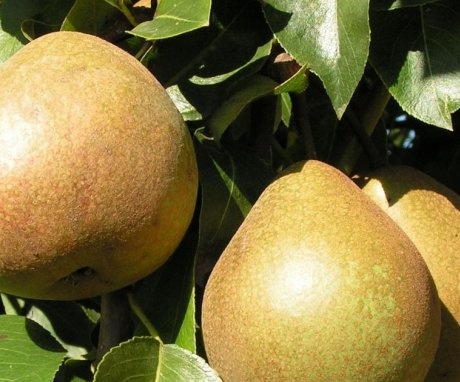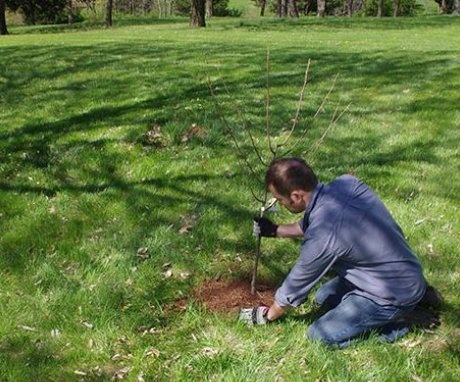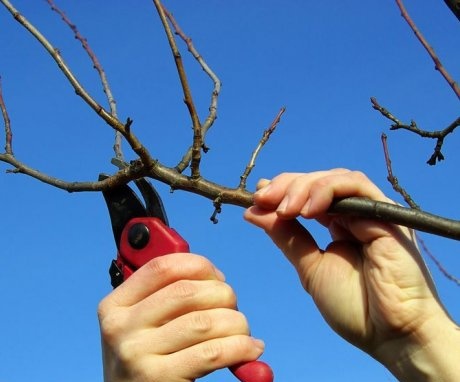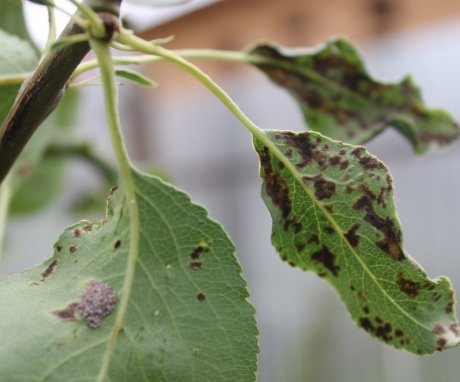Pear Belorussian late: description and cultivation
Among the common varieties of pears, Belorusskaya late is known for its unusual taste and late ripening. For the gardener, this variety is one of the last to bear fruit at the end of the season.
The late pear variety has several important characteristics that attract gardeners. Among them are long-term storage of fruits, during which the pear does not lose its flavor characteristics. The tree has excellent frost resistance and is completely unpretentious to care for. It is the complex of these factors that determines the popularity of the Belarusian late variety.
Content:
Description and advantages of the variety
Belarusian late pear is one of the late varieties that provide a large harvest when winter approaches. The tree itself does not have serious requirements for the rules of cultivation and subsequent care. For the gardener, these characteristics are very important and highly valued.
The pear tree itself Belorussian late is a plant of medium height.
It has a dense crown, which is usually formed in the form of a large geometrically regular ball. The main branches are separated from the main trunk at approximately right angles, and the ends of the branches are directed upward. After planting the first fruits, you can wait for 3 years of growth. The height of the tree reaches 4-5 meters, and the crown diameter is up to 4 meters. Shoots should be described separately. They are of medium thickness and round in cross section. The fleecy surface is the hallmark of this pear. The leaves are also medium-sized and oval-shaped.
Usually the size of the fruit is about 100 grams. They have a distinctly elongated shape. The skin of the pear is dull in color and has a unique roughness. In general, the color can vary depending on the degree of ripeness of the fruit. At the time of full ripening, the fruit has a yellow tint with an orange tint. When cut, you can see the snow-white pulp, which has a delicate and sweet taste. The structure itself is fine-grained.
Late Belarusian pear has the following advantages. For which gardeners and consumers love her:
- High yield of the variety, which is capable of producing about 130 centners of pears per hectare.
- Fruiting begins very early.
- Growing is simple and does not require much attention.
- The plant is frost-resistant and resistant to changes in temperature and humidity conditions.
- The fruits can be stored for a long time.
- The flavor characteristics of the ripe fruit meet high requirements.
Among the disadvantages of the variety are the following:
- Fruits can be susceptible to various types of pests.
- If the crop is plentiful, the size of the fruit can be noticeably reduced.
A careful approach to planting leads to the elimination of such moments.
Landing: timing and rules
The gardener must follow the rules and timing of planting the plant, thus it is possible to achieve the optimal variant and get the best harvest. Spring is the best time to plant a plant. As soon as the snow melts from the site, you should wait 4-5 days and you can plant a pear. The planting period lasts approximately 2 weeks. Planting in the fall is also allowed - then planting is permissible after the end of November and until the first frost.
At the stage of choosing a pear seedling, it is necessary to pay attention to the presence of thorns. If the plant does not have them, then it does not belong to wild varieties and will allow you to get a good harvest. The seedling used must have firm branches as well as firm bark and fresh foliage. Such a seedling will provide an excellent harvest. pears... The planting site of the Belarusian late pear should have a lot of light. The plant requires light for harmonious development, so this should be taken care of in advance. Considering the future dimensions of the tree, the site should have a free area of approximately 4 x 4 meters
The optimal type of land will be black soil - this type of soil is able to provide the plant with the necessary amount of nutrients.
Prepare the soil thoroughly before planting. A young seedling is not able to overcome the density of the soil and the lack of minerals on its own, so the gardener should help the plant. For a normal start of growth, the soil should be loosened and saturated minerals... The pit is usually 0.7 meters deep. The soil is mixed with 2 buckets of sand, 0.03 kg of potassium and 0.02 kg of phosphorus. Fertilization is carried out in advance so that the soil is completely absorbed and saturated with substances. Late Belarusian pear is planted in warm weather. It is important to keep it dry. To complete the work, you will need a bayonet shovel, watering hose, bucket and garden shears.
To achieve the optimal effect, the following procedure must be followed:
- Seedling preparation. This stage includes removing leaves and pruning damaged branches and roots of various sizes. The treated plant should be placed in water for 3 hours.
- A special recess is dug, which is determined from the size of the earthen coma (with a closed root) and can be about 1 meter in diameter and 0.8 meters deep (with an open root).
- The seedling is placed in the prepared hole.
- The hole is sprinkled with soil, which is subsequently carefully tamped with a simple shovel.
- Water the seedling abundantly, for which about 35 liters of water is used.
- Root mulch wood chips or crushed bark.
Care Tips
The late Belarusian pear variety is easy to care for. For a gardener, caring for a plant consists in the precise introduction of selected dressings, prompt and correct pruning of branches and roots. It is also important to provide the correct treatment for pests and diseases to keep the plant healthy. Otherwise, the volume of the crop is noticeably reduced.
After planting, the near-stem bush should be processed, which must be kept clean. Weeds that appear must be removed manually. It is not worth digging up the soil. So that weeds do not form near the trunk, the soil can be cultivated herbicides a certain kind. But it is important to make sure that the chemicals are accurately applied, which should not get on the leaves.
Some types of plants can be planted under the tree, such as meadow bluegrass or red fescue.
To preserve the roots and prevent them from freezing, sprinkle the root bush with chopped bark.
The pear tree is very resistant to various droughts and retains its freshness and strength. Usually. You can do without additional watering. Only in cases of extreme drought and prolonged lack of rainfall should approximately 50 liters of water be applied twice a week.
When a newly planted tree develops, pruning should be done correctly. This gives the grower an optimal yield and a beautifully formed plant. 4-5 healthy and strongest branches should be left on the seedling. Pruning them leads to the formation of the desired shape of the tree. The trunk itself should be cut to 25% of its original height. With development, the plants gradually form a dense crown. Pruning carried out in autumn and spring and, above all, cut off small branches.The pruning itself is done with a garden tool such as a garden knife, scissors, and pruning shears.
Diseases and pests
Pear Belorussian late is distinguished by rather persistent characteristics in the fight against various kinds of pests and diseases. To preserve the integrity and health of the plant, it is enough to use several types of simple medicines. For proper treatment, plants are used pesticides and fungicides.
The choice of remedy must be based on the specific disease and pest from which you want to save the tree.
The preparation of the treatment solutions must be carried out strictly in accordance with the rules defined by the manufacturer - this way it is possible to achieve an optimal result after treatment. The terms and frequency of use of the funds are determined in the instructions. Usually you need to process the plant once every 1-2 weeks.
More information can be found in the video:



